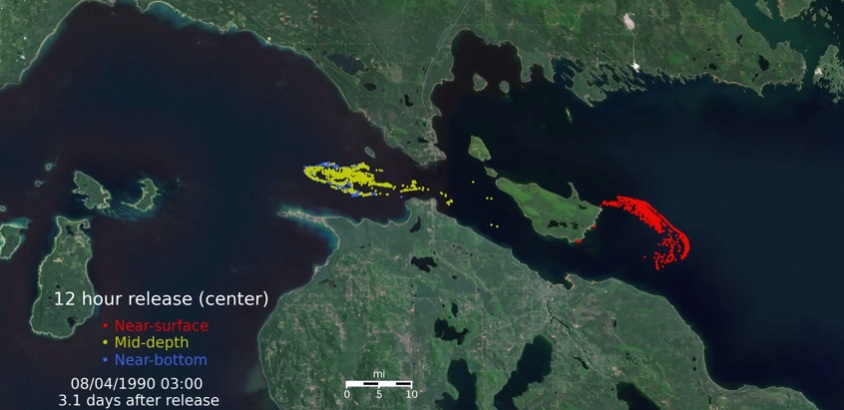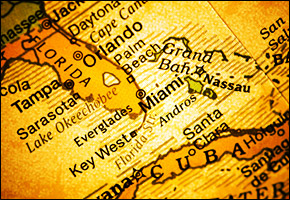Oil Rupture in Line 5 Pipeline in Mackinac Straits Would Be A Mammoth Mess
University of Michigan study provides online video scenarios of fast and expansive movement of oil in two Great Lakes.
By Kaye LaFond
Circle of Blue
ANN ARBOR, MI – A rupture in an underwater fuel pipeline that runs across the Straits of Mackinac in northern Lake Michigan would very quickly spread oil across the surface and the bottoms of two Great Lakes, and cause extensive contamination of beaches and bays, according to a University of Michigan study made public today.
The research findings, illustrated in six video scenarios, describe what could happen if the 61-year-old pipeline, known as Line 5, ruptured and 1 million gallons of oil were released. The pipeline is owned by Enbridge Inc, a Canadian company, which has asserted that Line 5 has operated without incident since it was constructed in the early 1950s. Line 5 transports Canadian crude oil to refineries in Sarnia, Canada. The pipeline, which crosses the Straits of Mackinac in a deep underwater course just west of the Mackinac Bridge, currently transports up to 23 million gallons of crude oil per day.
The new study was conducted by David J. Schwab, a researcher at the University of Michigan Water Center, a unit of the university’s Graham Sustainability Institute. Schwab’s simulation project was sponsored by the National Wildlife Federation, which published an influential and widely read report in 2012 that first alerted the public to the presence of Line 5 beneath the straits.
According to the report’s findings, a rupture under the straits would be particularly problematic because of the quickly moving and changing currents. The amount of water moving through the straits can be tenfold the volume of water that dives over Niagara Falls, and currents tend to reverse direction every few days.
“If you were to pick the worst possible place for an oil spill in the Great Lakes, this would be it,” said Schwab.
An oil spill under the Straits of Mackinac could reach beaches on Mackinac Island, one of the crown jewels of Michigan tourism, within 12 hours. The oil could travel as far as 35 miles to the west, reaching Beaver Island, and 50 miles to the southeast, all the way to Rogers City, said the report.
Kaye LaFond, a recent graduate of Michigan Tech, is designing graphics and reporting this summer from Circle of Blue’s Traverse City office.
is both a scientist and a journalist, she holds an MS in Environmental Engineering from Michigan Technological University, and she brings proficiency in ESRI’s ArcGIS mapping software.









Leave a Reply
Want to join the discussion?Feel free to contribute!